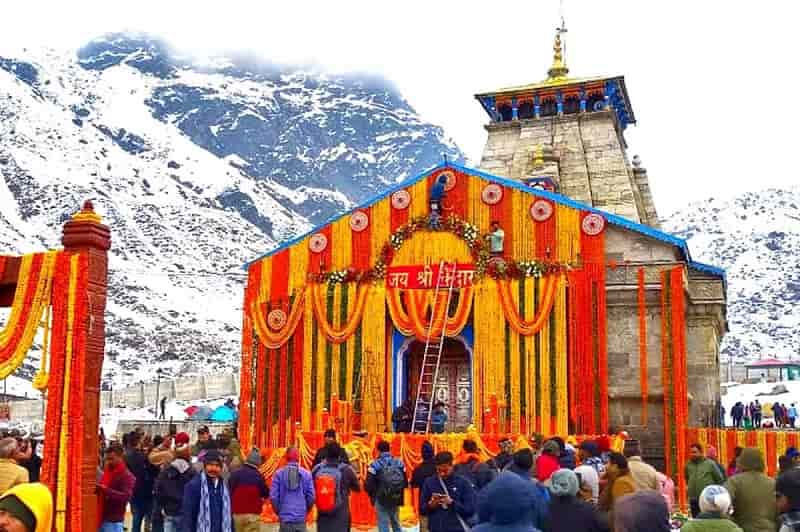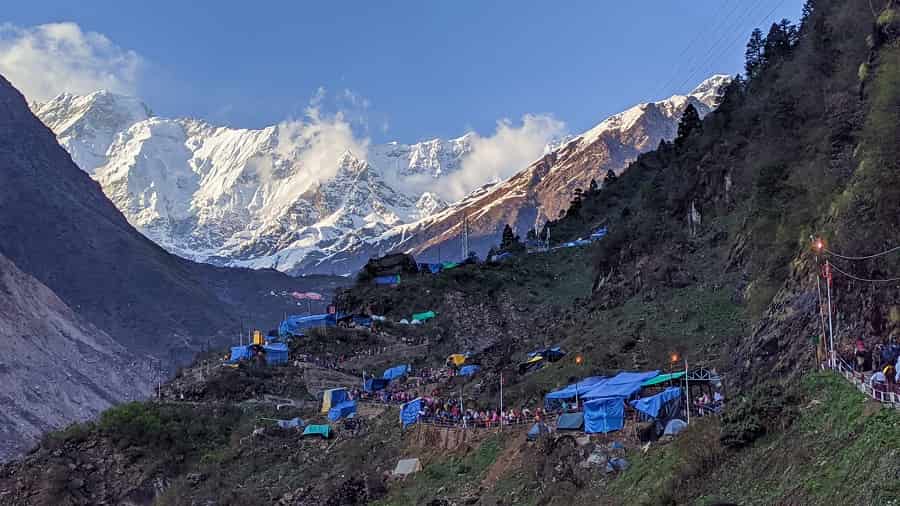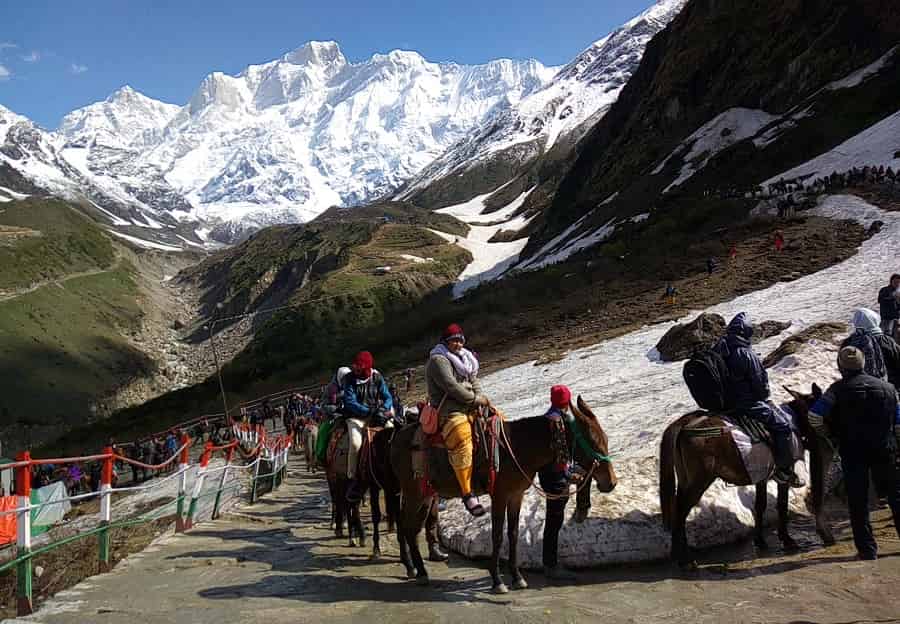Kedarnath, nestled in the Himalayas of Uttarakhand, India, is a sacred pilgrimage site and a popular trekking destination. This comprehensive guide will provide you with all the essential information you need to plan and embark on a memorable Kedarnath trek.

Introduction
The Kedarnath Trek offers a unique blend of natural beauty, spirituality, and adventure. It takes you through breathtaking landscapes, snow-capped peaks, pristine rivers, and ancient temples. This article will serve as your ultimate guide, covering various aspects of the trek, including the best time to visit, trekking routes, difficulty level, permits, accommodations, packing list, safety tips, attractions, and much more.
Overview of Kedarnath Trek
The Kedarnath Trek is a journey to the revered Kedarnath Temple, dedicated to Lord Shiva. It is located at an altitude of 3,583 meters (11,755 feet) above sea level and holds immense religious significance for Hindus. The trek is approximately 16 kilometers long and can be completed in 2-3 days, depending on the route chosen and the pace of the trekker.
Best Time to Visit Kedarnath
The best time to undertake the Kedarnath Trek is during the months of May to June and September to October. These periods offer pleasant weather, clear skies, and favorable trekking conditions. It is advisable to avoid the monsoon season (July and August) due to heavy rainfall, landslides, and the increased risk of flash floods in the region.
Suggested Tour: Kedarnath Tour Packages
Trekking Routes to Kedarnath
There are multiple routes to reach Kedarnath, each offering its own unique experiences and challenges. Let’s explore three popular routes:

Route 1: Gaurikund to Kedarnath
This is the most commonly used route and starts from Gaurikund, which can be reached by road from Rishikesh. The trek covers picturesque locations like Rambara, Jungle Chatti, and Bheembali, providing stunning views of the surrounding mountains.
Route 2: Sonprayag to Kedarnath
This route begins at Sonprayag and is relatively shorter than the Gaurikund route. It is a preferred choice for those who want to minimize the trekking distance without compromising on the scenic beauty.
Route 3: Guptkashi to Kedarnath
For those seeking a longer and less crowded route, Guptkashi serves as the starting point. This route passes through villages like Phata and Sitapur, offering a glimpse into the local culture and lifestyle.
Difficulty Level and Fitness Requirements
The Kedarnath Trek is considered moderately challenging, requiring a reasonable level of fitness and stamina. The steep ascent and uneven terrain demand prior physical preparation, including cardiovascular exercises, strength training, and regular walking or hiking practice. It is advisable to consult a doctor and undergo a thorough medical check-up before undertaking the trek, especially for individuals with pre-existing health conditions.
Permits and Regulations
To trek to Kedarnath, you need to obtain necessary permits and adhere to certain regulations. It is mandatory to obtain a permit from the Uttarakhand Forest Department. Additionally, a medical certificate stating your fitness level may be required. It is essential to follow the instructions and guidelines provided by the local authorities to ensure a safe and responsible trekking experience.
Accommodation Options
During the Kedarnath Trek, you have various accommodation options to choose from, depending on your preference and budget.
Guesthouses and Lodges
Guesthouses and lodges are available at regular intervals along the trekking routes. These provide basic amenities such as comfortable beds, hot water, and vegetarian meals. It is advisable to make advance bookings during peak seasons to secure your accommodation.
Tented Camps
For a more adventurous experience, you can opt for tented camps. These campsites offer a unique opportunity to stay amidst nature, surrounded by the majestic Himalayas. Basic facilities like sleeping bags, mattresses, and meals are provided at these camps.
Essential Packing List
To ensure a comfortable and safe trek, it is crucial to pack the right essentials. Here is a list of items you should consider carrying:
- Sturdy and comfortable trekking shoes
- Warm and waterproof clothing
- Backpack with rain cover
- Sleeping bag and mat
- First aid kit with essential medications
- Water bottles and purification tablets
- Snacks and energy bars
- Trekking poles
- Headlamp or flashlight
- Sunglasses and sunscreen
Safety Tips for Kedarnath Trek

While trekking to Kedarnath, safety should be your utmost priority. Here are some essential safety tips to keep in mind:
- Acclimatize properly and take necessary rest breaks during the trek.
- Stay hydrated and drink plenty of water to prevent altitude sickness.
- Follow the instructions of your trek leader or guide.
- Dress in layers to adapt to changing weather conditions.
- Inform someone about your trekking plans and expected return time.
Altitude Sickness and Acclimatization
Altitude sickness, also known as acute mountain sickness (AMS), can occur when ascending to high altitudes too quickly. It is essential to acclimatize properly during the Kedarnath Trek. Take regular breaks, maintain a steady pace, and listen to your body. If symptoms of altitude sickness persist or worsen, descend to a lower altitude immediately and seek medical help.
Highlights and Attractions on the Trek
Apart from the spiritual significance, the Kedarnath Trek offers breathtaking views and attractions that add to its charm. Here are some notable highlights along the route:
Triyuginarayan Temple
Located near Sonprayag, this ancient temple is believed to be the place where Lord Shiva and Goddess Parvati got married. It is a significant pilgrimage site and a must-visit attraction during the trek.
Vasuki Tal
Situated at an altitude of 4,150 meters (13,615 feet), Vasuki Tal is a glacial lake surrounded by stunning mountain peaks. It offers a serene and picturesque spot for nature lovers and photographers.
Chorabari Tal (Gandhi Sarovar)
Also known as Gandhi Sarovar, this high-altitude lake holds religious importance and is named after Mahatma Gandhi. It is located en route to Kedarnath and offers mesmerizing views of the surrounding peaks.
Shankaracharya Samadhi
A significant attraction near Kedarnath is the Samadhi (final resting place) of Adi Shankaracharya, the renowned Hindu philosopher and theologian. It is a revered site for devotees and visitors.
Wildlife and Flora on the Trek
The Kedarnath region is rich in biodiversity and offers a chance to encounter various species of flora and fauna. The trek takes you through dense forests of deodar and rhododendron trees, providing habitat for animals like musk deer, Himalayan black bear, and numerous bird species. Keep your camera ready to capture these enchanting wildlife moments.
Cultural Significance of Kedarnath
Kedarnath holds immense cultural and religious significance for Hindus. It is believed to be one of the twelve Jyotirlingas (lingams of light) of Lord Shiva. The trek offers an opportunity to witness the deep-rooted traditions, rituals, and spirituality of the region. Engage with the local communities, participate in their rituals, and embrace the cultural diversity.
Tips for Responsible Trekking
To ensure the preservation of the pristine environment and the well-being of the local communities, it is essential to trek responsibly. Here are a few tips:
- Carry a reusable water bottle to minimize plastic waste.
- Dispose of waste responsibly and avoid littering.
- Respect the local culture and customs.
- Do not disturb or harm wildlife or their habitats.
- Support local businesses and contribute to the local economy.
Conclusion
Embarking on the Kedarnath Trek is a remarkable experience that combines adventure, spirituality, and natural beauty. With proper planning, preparation, and an understanding of the trek’s nuances, you can make the most of this unforgettable journey. Enjoy the scenic vistas, immerse yourself in the spiritual aura, and create lifelong memories.
FAQs
- Is prior trekking experience required for the Kedarnath Trek?
- No, prior trekking experience is not mandatory, but it is advisable to have a reasonable level of fitness and stamina.
- Are there any age restrictions for the Kedarnath Trek?
- There are no specific age restrictions; however, individuals should be physically fit and capable of enduring the trek’s challenges.
- Are there any facilities for emergencies or medical assistance during the trek?
- Yes, there are medical facilities available at certain points along the trek. It is advisable to carry a first aid kit and consult a doctor before undertaking the trek.
- Can I hire a guide or porter for the Kedarnath Trek?
- Yes, hiring a guide or porter is recommended, especially for first-time trekkers or those unfamiliar with the region. They can provide valuable assistance and ensure a safe trekking experience.
- Is it possible to complete the Kedarnath Trek in a single day?
- While it is physically possible to complete the trek in a single day, it is not advisable due to the steep ascent and risk of altitude sickness. It is recommended to undertake the trek over 2-3 days for a more comfortable experience.


